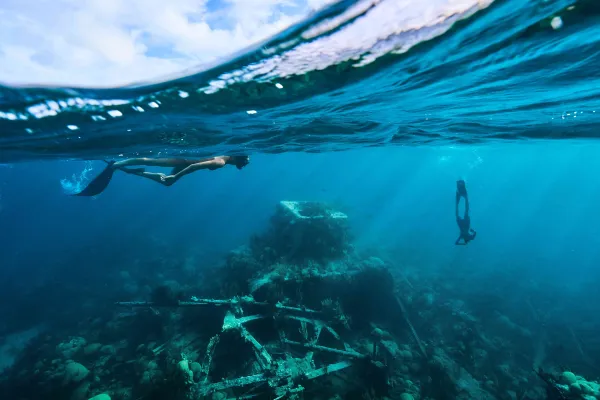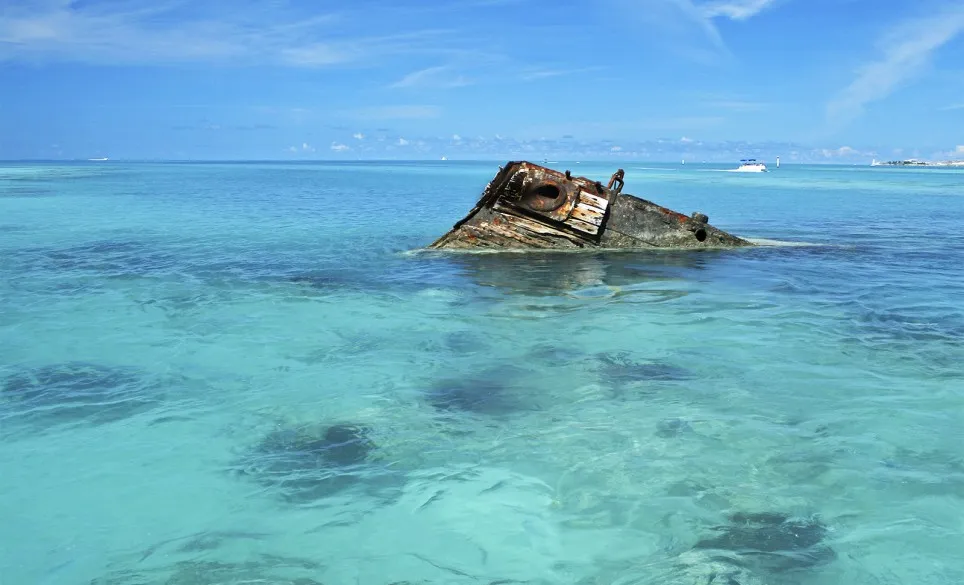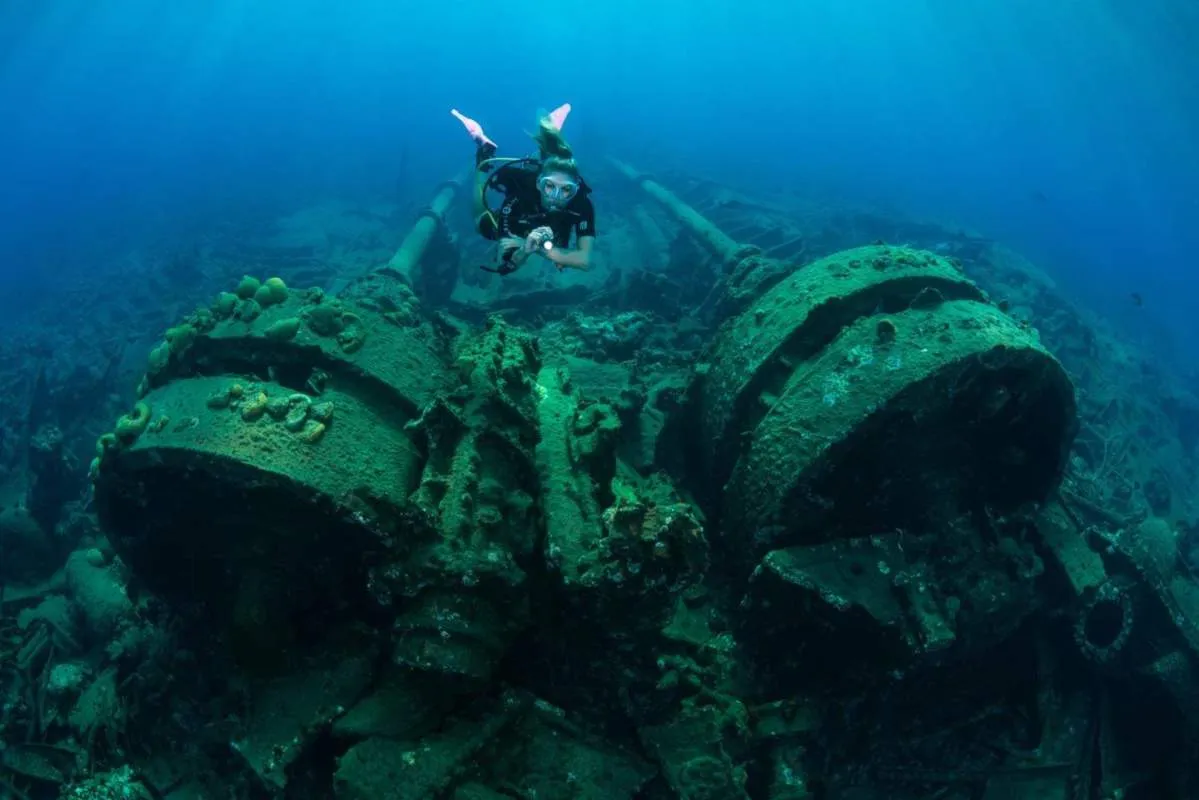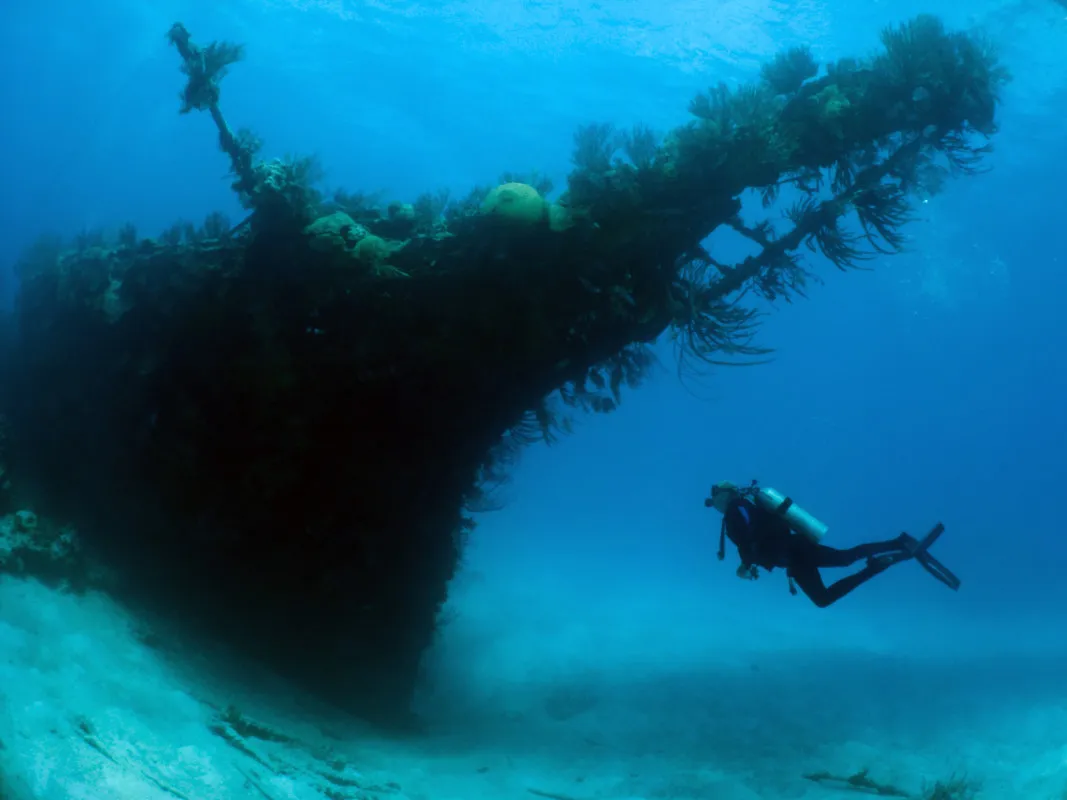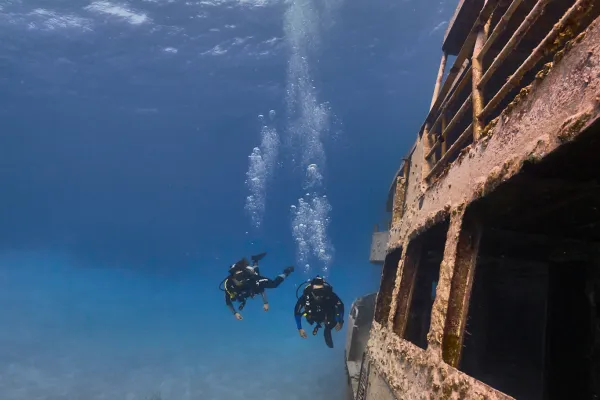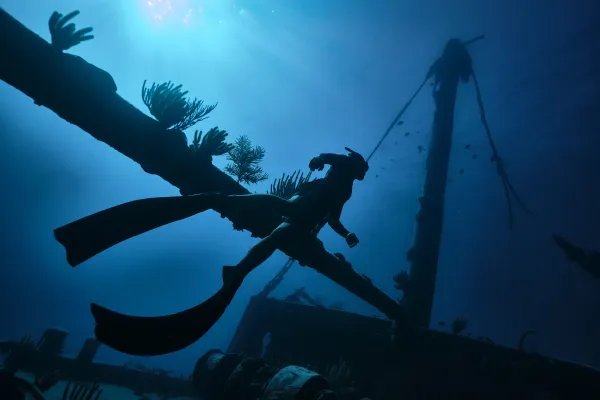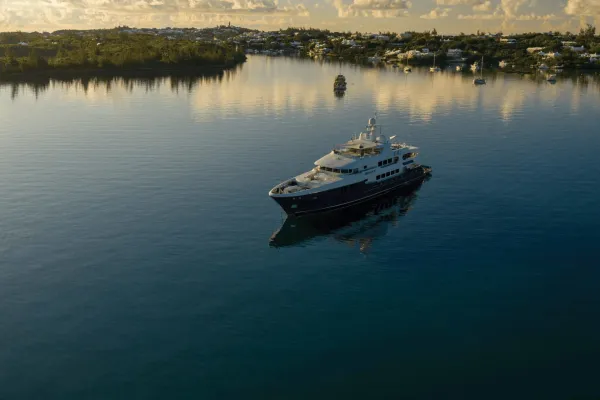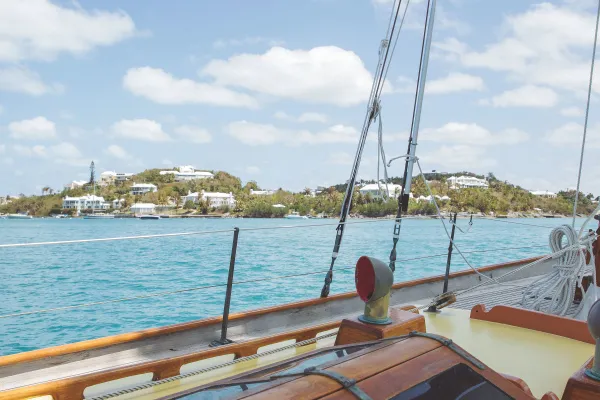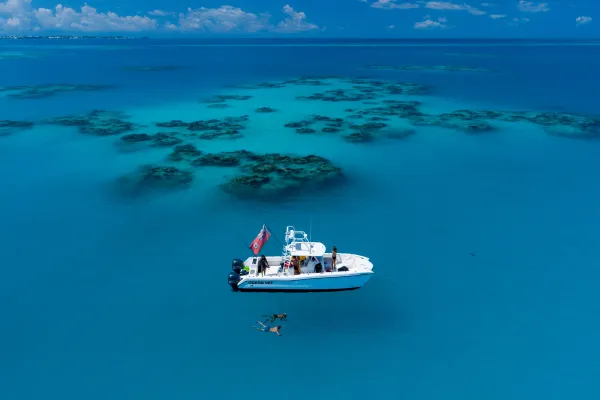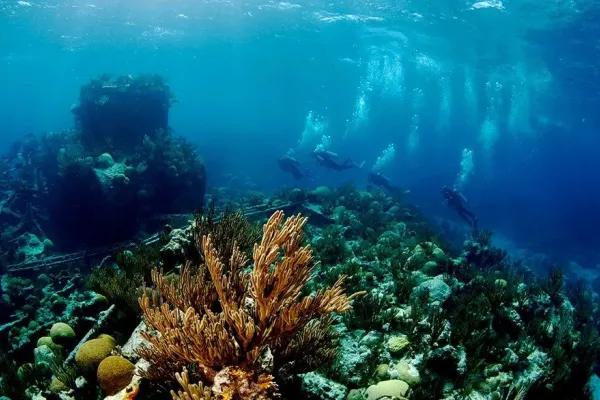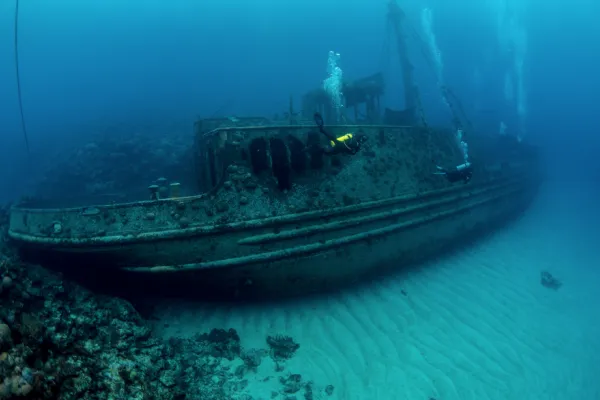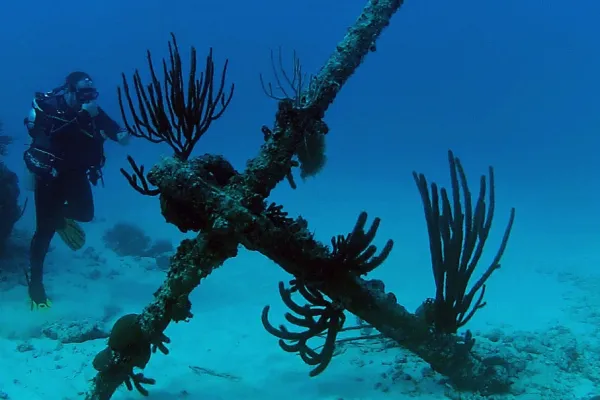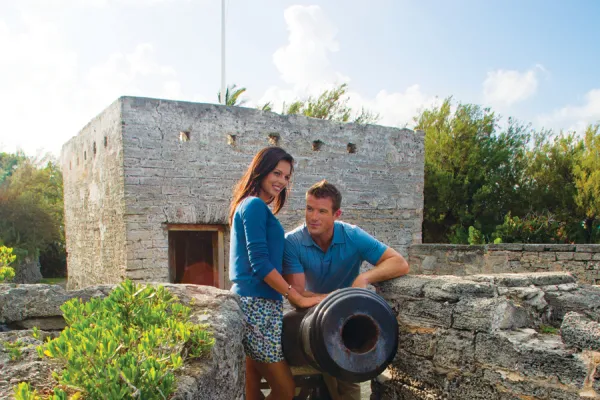Known as Bermuda’s unluckiest ship, this 250-foot-long Norwegian freighter sank in 1937. She sank because of another shipwreck. Unfamiliar with our reefs, her captain was surprised by the sight of the wrecked Cristobal Colon, and ordered his ship to turn away. The course change caused the Iristo to crash into a submerged reef and sink. Currently, the ship lies with her engine, boilers, propeller and a fire engine still visible. She's also laden with large amounts of beautiful coral. Highlight: coral
THE KING GEORGE
The King George is the only dredger out of three built for the Bermuda Government that still remains here. She is Bermuda’s largest, fully intact wreck. She arrived on the island in 1911 but was no longer needed for harbour operations by 1930. The ship was towed to a position five miles inside of North Rock and left to sink to the bottom of the ocean floor. Today, the surprisingly intact and upright ship gives an eerie and mysterious feel to the site and a thrilling dive experience. Highlights: intact, mysterious
THE MARY CELESTIA (AKA MARY CELESTE)
The paddle steamer and Civil War blockade-runner Mary Celestia sank soon after leaving port in Bermuda in 1864 bound for Wilmington, North Carolina with ammunition and supplies. Running aground on a reef , everyone on board survived the wreck except for the ship's cook, who entered the ship to collect his personal belongings. Some suspect that the Bermuda pilot guiding the boat at the time was bought off by the U.S. Consul in Bermuda and deliberately wrecked the ship. She rests at approximately 55 feet depth off the South Shore, with sections of her bow and stern, boilers, anchor and both paddle wheels visible.
In 2013, the XL Catlin Seaview Survey created a 360° panorama of the Mary Celestia. In 2015, a 151-year-old bottle of wine, belonging to a partial case found inside the wreck after Hurricane Bill in 2009, was opened for tasting by four master sommeliers at an event in Charleston. The reviews of the wine were less than stellar, but the stories of the Mary Celestia's daring history remain, and the surviving artifacts on the sea floor make it one of Bermuda's most popular dive sites. Highlights: paddle wheels – one standing upright on bottom, another laying on sand
